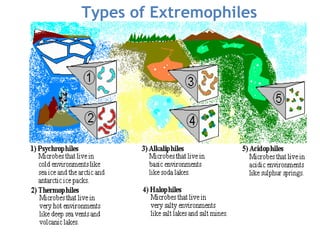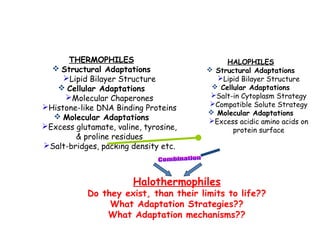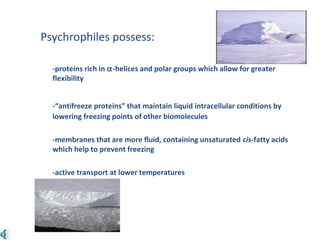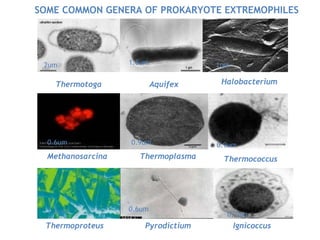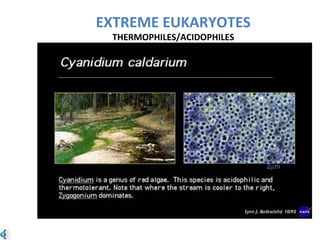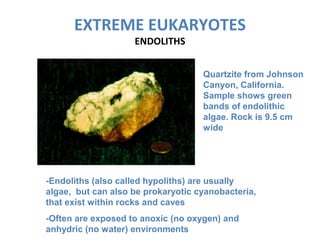This document discusses extremophiles, which are microorganisms that survive in extreme environmental conditions. It describes several types of extremophiles including thermophiles, psychrophiles, halophiles, barophiles, and xerophiles. Specific adaptations that allow extremophiles to survive high temperatures, high salt concentrations, high pressures, and low water availability are discussed. Examples of extremophilic prokaryotes, eukaryotes, and viruses are provided. The document suggests that extremophiles were likely the earliest forms of life on Earth and may have similarities to organisms that could survive on other planets.


